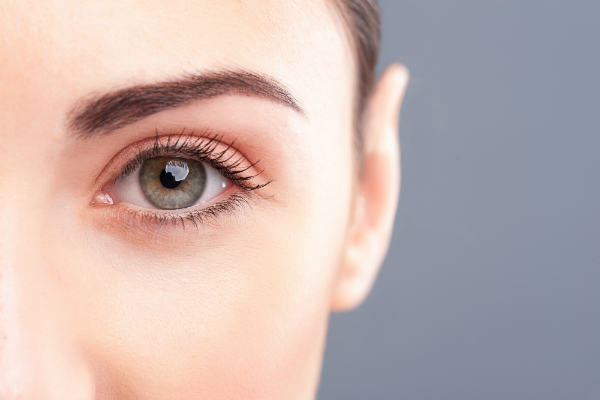Blepharoplasty is a type of plastic surgery that your eye care specialist performs on the upper or lower eyelids to remove excess skin and fat from around the eyes, with sagging eyebrows or eyelids being able to be corrected at the same time. The procedure is done mainly to improve vision and/or for cosmetic appearance factors, as excessive upper eyelid tissue can block the upper part of the visual field.
This kind of eyelid surgery, like all surgery, involves a period of recovery following the procedure, and we have found that patients knowing what to expect after the surgery is sometimes just as important as knowing what to expect during the procedure. Here, we’re going to discuss what is involved in recovery from eyelid surgery, as well as how long the process should ultimately last.
While we’ll get into the details concerning physical elements of the recovery period later in the blog – such as swelling and bruising – we can say that in a general sense, patients can initially expect redness and swelling around the incision areas, and that the eyes may tear excessively. Any dryness that develops in the area can be remedied by ointment that the eye care surgeon can provide; however, it’s important to note that patients may experience a temporary blurring of vision as a result of using such ointments. Regardless, temporary blurred vision is generally one of the common side effects of eyelid surgery, and recovery may also encompass temporary sensitivity to light.
Rowan Eye Center Fun Fact: Cosmetic eyelid surgery is one of the most common forms of plastic surgery procedures performed by ophthalmologists.
The Truth About What to Expect After Eyelid Surgery
Most patients, after getting eyelid surgery, are often unsure of what the normal expectations for healing are. Some of the questions we often hear are:
• How bruised am I expected to be?
• When will the swelling improve?
• When will I look myself again?
We’re going to give you an honest account of what your expectations should be following blepharoplasty.
To begin with, it’s important that we get some fundamental basics out of the way here: when you opt to have eyelid surgery, it is in fact surgery – regardless of whether an incision is being made with a cautery needle, blade or laser, the skin is being cut and tissue is being manipulated. From your body’s perspective, this is no different than when you sustain any other kind of injury or trauma, it’s just that in this case it’s being done in a “controlled” fashion. So, swelling and bruising are totally normal after any procedure.
Secondly, the more procedures that are performed on you, the more swelling and bruising you can expect (so if you have eyelid surgery plus other forms of plastic surgery done around your face, there will be excess bruising and swelling). Finally, when a doctor tells patients that most people are back to normal in two weeks, he or she really means 75 to 85 percent of people…in other words, all results will vary.
The following are several components of the healing process we’d like to now make you familiar with, encompassing bruising, swelling, scar and incision healing and lid position:
Bruising
Following eyelid surgery, expect to experience some bruising. Keep in mind, as we mentioned, this can be variable – some patients experience a light amount of redness near the incision site, while others see redness covering the entire eyelids. Bruising normally takes about two weeks to diminish.
Swelling
Immediately after surgery, you will experience swelling in the eyelids or face; this is because the body is sending in cells to heal the surgical area. Swelling may get worse over the first couple of days, as with any trauma, but within two weeks of a procedure, 90 percent of the swelling is usually gone. The remaining swelling usually diminishes within two to three months.
Scar/Incision Healing
It may take some time for the red line where the incision was made to heal; in the upper eyelids, this occurs in the eyelid crease, while in the lower eyelid (if this is performed) it usually occurs in the side corner near the lashes. While these scars heal to an almost unnoticeable form, the incisions can take up to a year to heal, although most cases are at their worst around six weeks.
Lid Position
Eyelid position can be affected by the bruising and swelling that occurs, but this usually corrects itself within six weeks or so.
As we stated, not all of the information and results described will be the same for every individual, but this gives a good idea of what to expect should you make the choice to have cosmetic eyelid surgery. For more detailed information about this procedure, schedule an appointment with a Rowan Eye Center representative.

